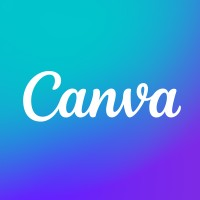How To Create An Eye-Catching Visual Resume
 Publié le 7 August 2023
Publié le 7 August 2023
Make sure your job application stands out to recruiters and hiring managers by learning how to create an eye-catching visual resume.
It’s a tough job market out there. With hundreds—if not thousands—of other applicants to compete against for your dream job, the resume you send out needs to make an impact on recruiters and hiring managers at first sight. Given the sheer volume of applications they have to comb through, yours must first catch their eye and then keep them wanting to read more.
Having impressive credentials won’t be enough. Since recruiters spend an average of seven seconds screening a resume, you also need to put our application together in a visually striking way. To help you with that, here are tips and tricks you can apply when learning how to create an eye-catching visual resume that stands out from the rest.
1. Start strong with an impactful resume overview
Your career summary — also known as a resume headline — is the hook with which you pull the recruiter’s attention. It presents relevant work experiences, skills, and achievements you know will matter to your prospective employer.
An effective summary is straight to the point. It clearly states your strengths and what you can bring to the table. Fresh graduates must also include this section in their resumes. In place of work experiences, they can share their academic achievements, career objectives, interests, and activities that support these.
2. Think both quality and quantity
The quickest and most concrete way to present your competency for the position you’re applying for is to use figures and statistics that quantify your work achievements. How much did your previous employer’s client base grow due to your efforts? How many leads did you generate? How much savings did the company accrue from the work systems you implemented?
Aside from lending credibility and authority to a resume, employers have come to expect applicants to include quantitative information in their applications. To add more impact to the figures, present them with action words: expanded, increased, generated, augmented, and more. Include the specific measures you took to achieve those numbers as well.
3. Sell your skills clearly
Skills can be soft or hard; most employers look for a combination of both. Hard or technical skills are those specific to your field, while soft or transferable skills are interpersonal skills that help any workplace function better.
We’ve cited specific skills that can make a resume stand out, which you can use as a checklist for what to include in your resume. Of course, depending on the job opening, you must mention your relevant hard and soft skills in presenting your overall compatibility with the position you’re applying for. Be sure to review the job posting for specific key traits they expect from applicants and include these words and phrases in your resume.
4. Provide employers more avenues to learn about you
We know that brevity is important in getting recruiters interested in your resume. However, that doesn’t mean you should shortchange yourself by leaving out some of your professional experiences just to keep your resume brief.
Circumvent this dilemma by including links to your online portfolio, website, and LinkedIn account in your application. That way, should they get curious to learn more about you, they have more content to peruse and evaluate. This is especially helpful if you are a creative talent such as a writer or a graphic designer. Creating an eye-catching visual resume or online portfolio not only gives important information to hiring managers but it’s also a chance to display your creative and organizational skills.
5. Showcase your capability to learn
Fresh graduates naturally need to include their educational background in their resumes. Highlighting their achievements at school and any recognition they receive helps boost their employability since school awards and titles signal their diligence and willingness to succeed.
Professionals need to do the same as well. Any upskilling training or workshops you’ve joined must be shared in the resume because it shows how driven you are to improve and build on your knowledge. Recruiters will understand that even when hired, you will continue to look for ways to do your job better. Most organizations now recognize the importance of encouraging learning and growth in the workplace, as it has clear benefits for both working professionals and employers looking to grow and succeed.
6. Present yourself as a well-rounded individual
Feel free to include pertinent hobbies and interests relevant to the position you’re applying for in your visual resume. For example, if you’re studying a second or third language, mentioning that can give recruiters an idea that you might be a good fit for when the company is making overseas expansions.
Previous volunteering experiences are also helpful, especially for those new to the workforce. Fresh graduates can include these and their extracurricular activities in their resumes to paint a clearer picture of their personalities, strengths, and interests.
7. Be proud of your achievements
Don’t hesitate to highlight the awards you’ve received from your previous companies or school in your resume. Titles you’ve won in competitions are also great additions to your resume, provided they’re related to your industry. Recruiters will be impressed to see further proof of applicants’ competence in their field and dedication to excellence.
8. Present yourself confidently and professionally
Every job applicant’s resume is their ticket for making a favorable impression on potential employers, the one that speaks on their behalf. That’s why it’s important to consider the tone you use in your resume, cover letter and follow-up communications.
Being confident in presenting your work experience will make recruiters believe you’re ready to take on the responsibilities of your desired position. Do this by presenting your skills and achievements with an active voice: “I supervised…” “I created…” “I improved…”
Avoid uncertain-sounding sentiments too that undermine your authority. It’s better to quantify your work contributions—read back to tip #2—than to use vague words such as “some,” “a few,” and “a number of.”
9. Edit your resume to stand out in an Applicant Tracking System
To help screen an average of 250 applicants for one corporate job opening, many recruiters now rely on Applicant Tracking Systems (ATS). These software programs can scan a large volume of resumes and narrow them down to a much smaller number of candidates who, on paper, best match the open position.
To successfully pass your dream company’s ATS algorithm filter, ensure your resume features keywords and phrases matching the job opening’s description of responsibilities. Use these keywords and phrases seamlessly when discussing your skills and work experiences, and be mindful of not overstuffing your resume. List your previous positions chronologically and include the month and year of your employment. This helps the ATS determine your experience level and gauge your suitability for the job.
10. Design your resume’s layout and format
With the content of your resume completed and edited accordingly, it’s time to pay attention to how your application looks.
There’s no need to spend hours designing it or hiring a graphic designer to do it for you. With so many resume builders to choose from, you can easily craft a standout CV on your own. Canva, for example, has a wide collection of templates and incredibly user-friendly editing tools you can use to learn how to create an eye-catching visual resume.
Since each template has been professionally designed for Canva users, there’s no more worry about having to take extra steps to highlight your name and title in your resume. Customizing the sections for work experiences, educational background, achievements, interests, and references is also easy. Simply replace the sample text with your own.
Visual resume builders are also convenient when you need to make your resume visually appealing. Font styles and color palettes are essential elements for making your career summary and qualifications easy to read.
With Canva’s resume builder, it’s quick and easy to try out different template themes, typography styles, and color stories to find the most eye-catching design that looks professional.
11. Integrate informative visuals
Know why infographics are effective formats for sharing information? They combine text with visuals to explain complex ideas in simpler and more understandable terms.
Apply the same idea to your visual resume’s design. Using minimalist graphics and icons to highlight or distinguish one section from another makes it look cleaner and more aesthetically pleasing since the visuals relieve the recruiter from reading chunks of text. Present quantified information through graphs and bullet points, too, for maximum impact.
12. Customize your approach to each job application
Another benefit of using a resume builder is that you can customize your resume for every job opening you’re applying to. This is a crucial step that many applicants tend to skip, costing them that crucial first interview by sending the same generic resume to many different job openings.
It’s easy to tell when a resume is generic that a job hunter sends to every recruiter: There is no sense of focus on or connection to the position they’re applying for. The stated career objectives are also vague. Presenting information in your resume that’s not tailored to what the job description is looking for is one of the signs of a weak resume, and it leads recruiters to believe that an applicant isn’t serious about pursuing a career with their company.
Dedicate time to ensuring the resume you’re sending to a potential employer fits the position you want to fill in their company; we have already mentioned using keywords and phrases in your resume (tip #9). To streamline your customization for each resume, let a resume builder like Canva help you remain organized. Even when you use the same template for all your applications, it’s easy to review each resume to check their suitability for a specific job opening.
Conclusion
The job search process is undeniably hard, and knowing how to create an eye-catching visual resume is just the first step. Relying on old-school practices for creating your application is no longer effective, thanks to an increasingly competitive job market. Software programs that screen resumes have also made it necessary for applicants to be more thorough and innovative. However, once you get this part right, convincing employers to take a chance on you becomes easier.
Use our easy-to-follow tips to guide you in crafting your visual resume. Treat them as a checklist to make sure that your application becomes the one recruiters want to read and recommend to hire.







